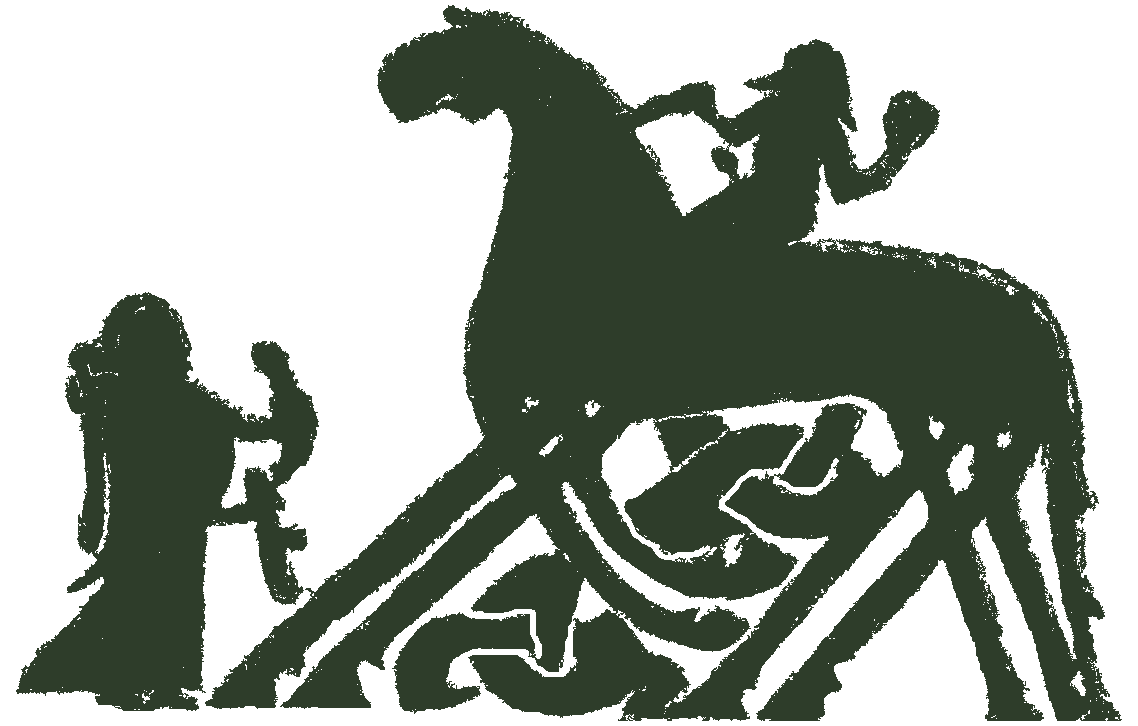Arnórr jarlaskáld Þórðarson
description
Arnórr jarlaskáld ‘Jarls’-poet’ came from Hítarnes in western Iceland, the son of the prosperous farmer and poet Þórðr Kolbeinsson (ÞKolbI, born 974) and Oddný eykyndill ‘Island-candle’ Þorkelsdóttir, who was the subject of the long-running personal and poetic rivalry between Þórðr and Bjǫrn Hítdœlakappi (BjhítV) which is commemorated in Bjarnar saga Hítdœlakappa. According to that saga chronology, Arnórr would have been born c. 1011/12, and he features as a boy in ch. 23 of the saga, and in ch. 60 of Grettis saga. He went abroad, probably in his early twenties, for he is named in Skáldatal (SnE 1848-87, III, 258, 267) among the skalds of King Knútr inn ríki (Cnut the Great) (d. 1035). From the evidence of the memorial poems Rǫgnvaldsdrápa (Arn Rǫgndr), especially st. 2, and Þorfinnsdrápa (Arn Þorfdr), especially sts 3, 4 (cf. Lv 1), he spent several years in the Orkney Islands as poet and intimate of the jarls Rǫgnvaldr (d. c. 1045) and Þorfinnr (d. c. 1065). It is to this that his nickname refers. Arnórr was in Norway during the brief joint rule of Magnús Óláfsson and Haraldr Sigurðarson (c. 1045-6), and his performance of Hrynhenda (Arn Hryn) for Magnús and Blágagladrápa ‘The drápa of Dark Geese (= Ravens (?))’ for Haraldr is the subject of a spirited anecdote (Mork 1928-32, 116-18, Flat 1860-8, III, 321-3, Fms 6, 195-8; referred to below as ‘the Mork anecdote’). The later part of Arnórr’s career is obscure, but there is a second, memorial poem for Magnús, Magnússdrápa (Arn Magndr), and his composition of a Haraldsdrápa (Arn Hardr) in memory of Haraldr (d. 1066) suggests continuing links of some kind with Norway, though he also composed about Icelanders: a fragmentarily preserved poem for Hermundr Illugason (d. c. 1055; Arn HermIII) and a poem for Gellir Þorkelsson (d. 1073) of which Arn Frag 1III might be a remnant. For further outlines of Arnórr’s life and works, see Hollander 1945, 177-83; Turville-Petre 1968, 5-10, 1976, 93-4; Whaley 1998, 41-7.
The majority of Arnórr’s surviving oeuvre takes the form of memorial encomia (erfidrápur) for rulers of Norway or Orkney in the dróttkvætt metre: ten ll. only of Rǫgndr and longer fragments of Magnússdrápa (Magndr), Þorfdr and Hardr. His greatest contribution to the development of skaldic poetry, however, is his authorship of the first known encomium in the hrynhent metre: the Hrynhenda which, since it apostrophises Magnús góði, must predate the memorial Magndr. Arn Frag 1III is in the same metre but probably unconnected (see above). It is possible that Arn Frag 4III is in praise of Knútr inn ríki and the non-royal dedicatees of Herm and Frag 1 have been mentioned above. Arnórr also appears in one recension of Skáldatal (SnE 1848-87, III, 262) as a poet of Óláfr kyrri ‘the Quiet’ Haraldsson (d. 1093), and the pres. tense praise of Arn Frag 3III could have been addressed to him, or alternatively to Haraldr in Blágagladrápa. Only one st., Arn Lv 1, seems clearly to be a lv.; it was spoken during a civil conflict in the Orkneys. Herm and the eight other Fragments are printed in SkP III since they are preserved in SnE and LaufE and cannot be certainly assigned to any of the poems in the present volume.
The principal eds consulted in the course of editing Arnórr’s poetry for SkP are listed for each st., and are of two main types: eds of the skaldic corpus (Finnur Jónsson’s in Skj AI, 332-54, BI, 305-27, BI, and E. A. Kock’s in Skald I, 155-65, supported by numerous NN) and eds of the various prose works in which the poetry is preserved. Extracts are also included in anthologies, articles and other works including (with ten or more sts): Munch and Unger 1847, 119-20; CPB II, 184-98; Wisén 1886-9, I, 44-6, 141-2, 199-200 (Hryn only); Kock and Meissner 1931, I, 48-53; Hollander 1945,177-88 (annotated translations only, mainly Hryn); and (with five sts): Turville-Petre 1976, 93-7. Other works containing comment on the poetry are cited as appropriate in the Notes.
